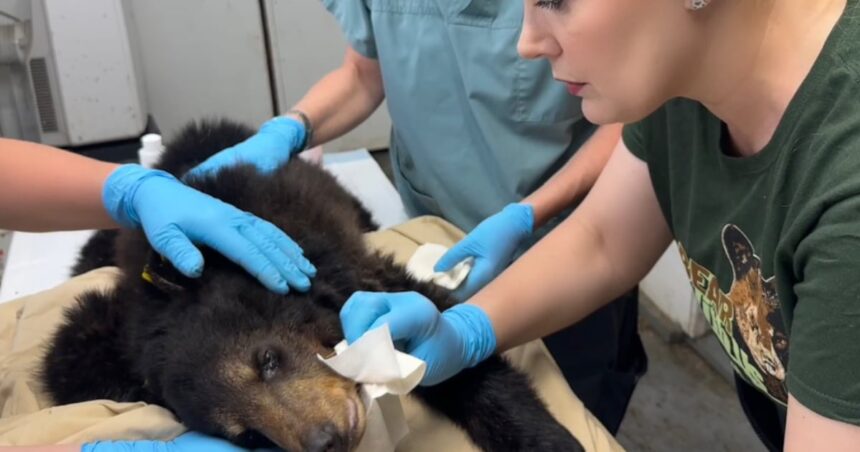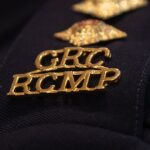As I take in the details from the wildlife rehabilitation center in northern Ontario, the small black bear’s resilience is immediately apparent. Despite surviving what could have been a fatal gunshot wound to its face and neck, the cub—now nicknamed “Chance”—seems to be beating the odds.
“When they first brought the cub in, we weren’t sure he’d make it through the night,” explains Megan Thompson, head veterinarian at the Northern Wildlife Recovery Center. “The damage was extensive, but bears are remarkably tough animals.”
According to provincial conservation officers who discovered the injured animal near Thunder Bay last week, the approximately six-month-old cub was found wandering alone, disoriented and bleeding. Initial assessments suggest the bear was shot with what appears to be a small-caliber hunting rifle, though investigations are ongoing.
The incident has sparked renewed debate about human-wildlife conflict in Canada’s expanding rural communities. Ministry of Natural Resources spokesperson Devon Clarke confirmed this represents the third reported case of bear cub injuries from suspected deliberate harm in the region this season alone.
“While we understand residents may feel threatened by wildlife, there are proper channels to address these concerns,” Clarke told me during a phone interview yesterday. “Shooting a young animal and leaving it to suffer is not only cruel but illegal under provincial wildlife protection statutes.”
Conservation authorities have launched an investigation to identify those responsible, with penalties that could include fines up to $25,000 and potential jail time under Ontario’s Fish and Wildlife Conservation Act.
Meanwhile, at the recovery center, Chance’s treatment involves a careful regimen of antibiotics, pain management, and specialized nutrition. Dr. Thompson points out that beyond the physical injuries, rehabilitating wildlife requires attention to their natural behaviors.
“We need to ensure these animals don’t become habituated to humans,” she explains while checking the cub’s bandages. “Our goal is always to return them to the wild as the capable, human-shy animals they should be.”
The center reports that Chance is showing promising signs of recovery. Though still requiring tube feeding and limited mobility, the cub has begun showing interest in natural foods and demonstrates the wariness of humans that will be crucial for its eventual release.
Wildlife experts note that bear encounters typically increase during summer months when natural food sources might be scarce and cubs are learning to forage independently. Sarah Mackenzie, a wildlife biologist with the provincial conservation department, emphasizes education as the key to reducing negative interactions.
“Most bears, even adults, prefer to avoid human contact,” Mackenzie says. “Simple measures like proper garbage management and removing bird feeders during summer months can dramatically reduce the likelihood of unwanted encounters.”
Communities across northern Ontario have implemented various strategies to minimize human-wildlife conflicts, including bear-proof garbage containers and community education programs. The Thunder Bay region recently launched a “Bear Aware” initiative that connects residents with resources for safely coexisting with local wildlife.
For now, the rehabilitation team remains cautiously optimistic about Chance’s future. If recovery continues as hoped, the cub could potentially be released back into suitable habitat next spring, after hibernation season and when natural food sources become more plentiful.
“Each animal deserves a second chance,” Dr. Thompson reflects, watching the bear cub sleep peacefully after treatment. “And this little one seems determined to make the most of his.”
As Canada continues to grapple with expanding human development into wildlife habitat, stories like Chance’s highlight the delicate balance between human safety concerns and wildlife protection—a balance that becomes increasingly important as these spaces continue to overlap.






